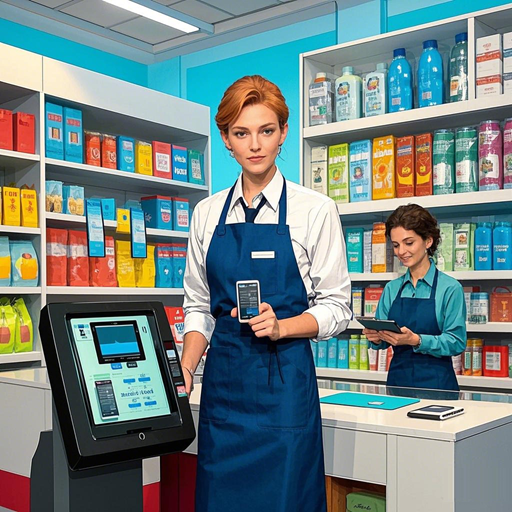Choosing the Right Time and Attendance System for Retail

For retail businesses, managing labor effectively is one of the most critical aspects of maintaining profitability and delivering excellent customer service. Whether it’s ensuring adequate staffing during peak hours or avoiding unnecessary overtime costs, choosing the right time and attendance system can have a significant impact on a retailer’s operations.
But with so many options on the market, how do you select the system that best aligns with your business needs? In this article, we’ll explore key considerations, provide actionable insights, and discuss how the right system can transform your workforce management.
Why Time and Attendance Systems Matter in Retail
Retail is an industry of constant motion. Employees clock in and out across shifts, handle unpredictable customer demands, and adapt to seasonal peaks. Without a robust time and attendance system, managing such a dynamic workforce can lead to inefficiencies, unnecessary labor costs, and compliance risks.
A report by the National Retail Federation shows that poor labor management can account for up to 15% in preventable financial losses annually. The right system doesn’t just track hours worked—it optimizes operations, minimizes errors, and equips managers with tools to make data-driven decisions.
Key Features to Look for in a Retail Time and Attendance System
1. Accurate Time Tracking: Eliminating Errors and Fraud
Accurate tracking of employee hours is the foundation of any time and attendance system. Retail employees often work in shifts, and discrepancies in time tracking—whether intentional or accidental—can lead to payroll errors or inflated labor costs.
What to Look For:
- Biometric Tools: Biometric systems (such as fingerprint or facial recognition) eliminate issues like "buddy punching," where one employee clocks in/out for another.
- Point-of-Sale (POS) Integration: For frontline employees, integration with your POS system makes clocking in and out seamless.
- Real-Time Tracking: Managers can monitor attendance in real-time to resolve discrepancies immediately.
Example in Action: A mid-sized retailer implemented a fingerprint-based system to replace their manual punch cards. Within three months, unauthorized overtime reduced by 20%, saving nearly $15,000 in payroll costs.
2. Efficient Scheduling and Shift Management
Retail businesses thrive on efficient scheduling. A poorly planned schedule can result in overstaffing during low-traffic hours or understaffing during peak times, both of which harm profitability and customer experiences.
Key Features to Consider:
- Recurring Shift Templates: Automate common shift patterns to save time.
- Shift Swapping and Preferences: Allow employees to swap shifts or indicate their availability.
- Seasonal Flexibility: Systems that accommodate temporary or part-time staff during holidays or sales events are essential.
Peak Season Tip: During high-traffic seasons like Black Friday or Christmas, a dynamic scheduling system can help align staffing levels with projected customer volume. Automated scheduling tools can use historical sales data to predict labor needs.
3. Advanced Analytics and Reporting for Smarter Decisions
In retail, data is gold. A good time and attendance system doesn’t just track hours—it provides actionable insights to help you optimize operations and control costs.
What to Expect From Reports:
- Labor Cost Insights: Visualize how much you’re spending on labor, including overtime and unscheduled hours.
- Schedule Performance: Compare scheduled vs. worked hours to identify inefficiencies.
- Store or Department Comparisons: Analyze performance across different locations or departments to spot trends.
Example Insight: One national retailer used analytics to identify that 70% of overtime came from a single department. After adjusting schedules and enforcing stricter overtime rules, they reduced labor costs by 10% over a quarter.
4. Mobile Access for a Remote Workforce
Today’s workforce is increasingly mobile, and retail employees need access to tools that allow them to manage their schedules easily. A mobile-friendly system empowers both employees and managers, enhancing overall efficiency.
Mobile Features to Look For:
- Employees can clock in/out remotely or check schedules.
- Managers can approve time-off requests, adjust schedules, and monitor attendance from their phones.
- Push notifications alert employees of shift changes, approvals, or reminders.
Real-World Application: Imagine a store manager receiving a mobile alert that an employee called in sick. Within minutes, they can send out a shift-fill request to other employees, minimizing coverage gaps.
5. Payroll Integration: Streamlining Operations
Manually transferring employee hours into a payroll system is time-consuming and prone to errors. A modern time and attendance system should integrate seamlessly with your payroll software.
Benefits of Integration:
- Error Reduction: Automatic transfer of approved hours ensures payroll accuracy.
- Time Savings: Reduces administrative burden for HR and payroll teams.
- Compliance: Ensures accurate calculation of overtime, PTO, and other benefits in line with labor laws.
6. Flexible Punch Options for a Diverse Workforce
Retail employees work in various scenarios—some on-site, others off-site. Your system should offer multiple ways to clock in/out, ensuring flexibility and ease of use.
Common Punch Options:
- POS system integration
- Dedicated time clock terminals
- Mobile apps for remote workers
- Telephone-based punching (for off-site tasks)
- Web-based portals
Final Thoughts
Selecting the right time and attendance system is more than a technical decision—it’s a strategic move to improve efficiency, reduce costs, and enhance employee satisfaction. By prioritizing accurate tracking, advanced analytics, and seamless integration, you can transform workforce management into a competitive advantage.
Take the time to evaluate your unique needs, and don’t hesitate to invest in a solution that will streamline your operations and help your retail business thrive.